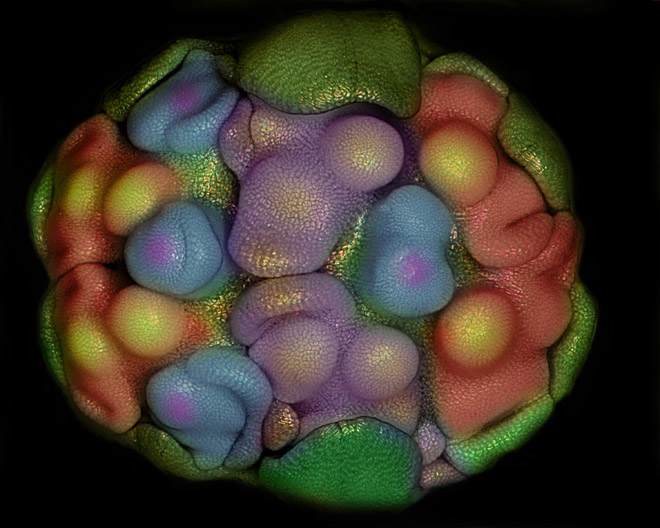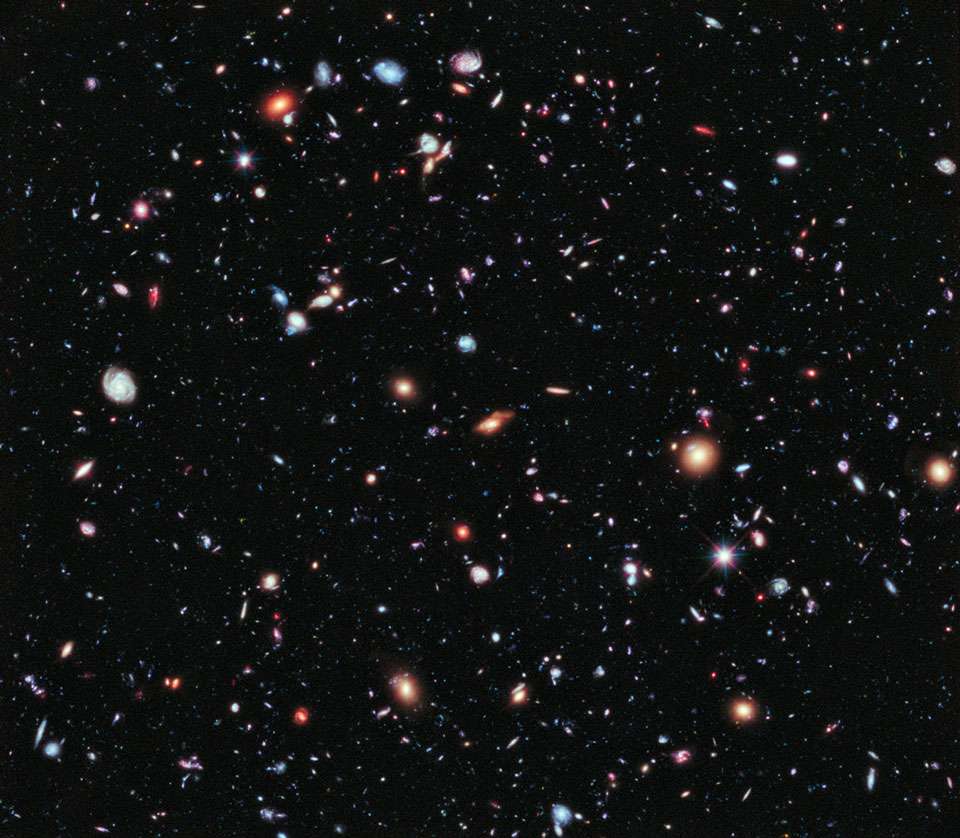It looks like you're using an Ad Blocker.
Please white-list or disable AboveTopSecret.com in your ad-blocking tool.
Thank you.
Some features of ATS will be disabled while you continue to use an ad-blocker.
12
share:
I am amazed that every year, there is something we can learn through pictures.
I thought this was a great little slide show presented. Many I saw, some I never did. Here's a few of them. I am sure ATS has a bunch more that they feel should be presented in this thread.......
Feel free to add to it !





The Most Amazing Science Images of the Year
Enjoy.
I thought this was a great little slide show presented. Many I saw, some I never did. Here's a few of them. I am sure ATS has a bunch more that they feel should be presented in this thread.......
Feel free to add to it !

It's difficult for the unaided eye to appreciate the striking, varied geography of the moon, which has peaks higher than Mount Everest and craters nearly as deep as the Marianas Trench. This topographical map, published by NASA in February, conveys that geography in glorious fashion.

A spider attacks a wasp: A minute, everyday event, something that's happened billions upon billions of times in these antagonists' evolutionary history, each incident lost to time. But not this meeting, entombed by tree resin 100 million years ago in what's now Myanmar. The resin turned to amber, a time capsule both beautiful and informative.

Superstorm. Megastorm. Frankenstorm. Some 1,100 miles across, Sandy was the largest Atlantic hurricane ever.

These Pollia condensata berries are so colorful that they might have been picked minutes ago. In fact, they were gathered in 1974. Like beetles and butterflies, their color comes not from pigments but from the refractive geometries of their surface coverings, which don't degrade over time. (Some beetle colors even shine true after nearly 50 million years.) Researchers say that P. condensata's blue is the most intense color in the natural world.

The microscopic world is a cornucopia of beautiful images; most any finalist in Nikon's Small World contest or the Olympus Bioscapes Digital Imaging Competition deserves inclusion on this year-end image list. But if just one is to be picked, let it be this single-celled algae photographed by Marek Mis, conveying in its light and color the essences of life itself.
The Most Amazing Science Images of the Year
Enjoy.
reply to post by ohyouknow
I agree wholeheartedly......
I can only wonder what will make the list for 2013.
I agree wholeheartedly......
I can only wonder what will make the list for 2013.
reply to post by sonnny1
Here's a couple I thought were amazing as well


Here's a couple I thought were amazing as well

The Peacock Mantis Shrimp, Odontodactylus scyllarus, has one of the most complex vision systems in the marine world. Obviously.

A neuron treated with a beta-amyloyd peptide shows here a beta-amyloyd plaque -- thought to be the fundamental cause of Alzheimer's disease.
edit on 30-12-2012 by iamhobo because: (no reason given)
Beautiful images, thank you for posting them. I remember that iridescent fruit, earlier this year. Here is one I like, being a garlic fan

www.wired.com... enceclickthru&pid=5887

This year's winners include super-close-ups of garlic
www.wired.com... enceclickthru&pid=5887
Some of the most beautiful things on this planet are, literally, right under our noses.
Scenery can gorgeous, but look through a good magnifying glass at some common things around you. You'll be amazed.
Scenery can gorgeous, but look through a good magnifying glass at some common things around you. You'll be amazed.
Amazing, could look at a million of these pics and never get bored. Thanks for sharing
reply to post by sonnny1
This odd photo appeared in March 2012. Definitely Top 10.
Black Triangle on our sun? Solar Dynamics Observatory
What is it?
This odd photo appeared in March 2012. Definitely Top 10.
Black Triangle on our sun? Solar Dynamics Observatory
What is it?
reply to post by sonnny1
That is a humpback whale that was spotted off the coast of Norway this year.(2012)
It makes me think of Moby Dick and Captain Ahab.
That is a humpback whale that was spotted off the coast of Norway this year.(2012)
It makes me think of Moby Dick and Captain Ahab.
reply to post by TauCetixeta
You'd have to connect a few dots and do some "shading" of that coronal hole to make it a triangle, imo.
OP: Great thread.
Black Triangle on our sun?
You'd have to connect a few dots and do some "shading" of that coronal hole to make it a triangle, imo.
OP: Great thread.
My favorite for this year:
Called eXtreme Deep Field (XDF) this picture is the result of 10 years of work from Hubble, NASA, ESA and XDF/HUDF09 teams.
Exposure time was of 22.5 days (2 million seconds); the picture is a composite view of separate exposures acquired by the ACS and WFC3/IR instruments. Several filters were used to sample various wavelengths. The color results from assigning different hues (colors) to each monochromatic (grayscale) image from the eight different filters used by the two instruments.

Source
Full extra-large picture (1.63Mb) can be downloaded from the Hubble site
5500 galaxies in 2 arcminutes!! Wow
Deepest image of the universe ever taken - 5500 galaxies in 2 arcminutes in size!!
Called eXtreme Deep Field (XDF) this picture is the result of 10 years of work from Hubble, NASA, ESA and XDF/HUDF09 teams.
Exposure time was of 22.5 days (2 million seconds); the picture is a composite view of separate exposures acquired by the ACS and WFC3/IR instruments. Several filters were used to sample various wavelengths. The color results from assigning different hues (colors) to each monochromatic (grayscale) image from the eight different filters used by the two instruments.

What did the first galaxies look like? To help answer this question, the Hubble Space Telescope has just finished taking the eXtreme Deep Field (XDF), the deepest image of the universe ever taken in visible light. Pictured above, the XDF shows a sampling of some of the oldest galaxies ever seen, galaxies that formed just after the dark ages, 13 billion years ago, when the universe was only a few percent of its present age. The Hubble Space Telescope's ACS camera and the infrared channel of the WFPC3 camera took the image. Combining efforts spread over 10 years, the XDF is more sensitive, in some colors, than the original Hubble Deep Field (HDF), the Hubble Ultra Deep Field (HUDF) completed in 2004, and the HUDF Infrared completed in 2009. Astronomers the world over will likely study the XDF for years to come to better understand how stars and galaxies formed in the early universe.
Source
Full extra-large picture (1.63Mb) can be downloaded from the Hubble site
5500 galaxies in 2 arcminutes!! Wow
edit on 31-12-2012 by elevenaugust because: (no reason given)
new topics
-
UK and Europe Floods
Rant: 26 minutes ago -
FEMA kicks hurricane survivors out of temporary housing into snowstorm and freezing temperatures
Disaster Conspiracies: 50 minutes ago -
Failures of leadership on display
US Political Madness: 1 hours ago -
Power grid faults surged right before Los Angeles wildfires began
Mainstream News: 1 hours ago -
Tustin California Military equipment stolen BIG equipment .
Social Issues and Civil Unrest: 1 hours ago -
PALES-TINE, PALES-ADES and the Australian Aboriginal "Lightning Man"
Dreams & Predictions: 1 hours ago
top topics
-
Tustin California Military equipment stolen BIG equipment .
Social Issues and Civil Unrest: 1 hours ago, 9 flags -
Just Came Across These Unusual Old UFO Pics
Aliens and UFOs: 17 hours ago, 7 flags -
How To Spot Fake U.F.O. Photos
Aliens and UFOs: 13 hours ago, 7 flags -
Scary video of face in an abandoned house
Paranormal Studies: 15 hours ago, 6 flags -
Failures of leadership on display
US Political Madness: 1 hours ago, 6 flags -
FEMA kicks hurricane survivors out of temporary housing into snowstorm and freezing temperatures
Disaster Conspiracies: 50 minutes ago, 6 flags -
Power grid faults surged right before Los Angeles wildfires began
Mainstream News: 1 hours ago, 5 flags -
PALES-TINE, PALES-ADES and the Australian Aboriginal "Lightning Man"
Dreams & Predictions: 1 hours ago, 3 flags -
UK and Europe Floods
Rant: 26 minutes ago, 2 flags
active topics
-
Instrumental Surf Music - Origins to the Present Day
Music • 251 • : underpass61 -
Power grid faults surged right before Los Angeles wildfires began
Mainstream News • 3 • : fringeofthefringe -
Mood Music Part VI
Music • 3783 • : underpass61 -
Post A Funny (T&C Friendly) Pic Part IV: The LOL awakens!
General Chit Chat • 8016 • : underpass61 -
Could the Civil War have been about piracy?
History • 8 • : Solvedit -
Sepultura - Territory - With New Drummer Greyson Nekrutman
Music • 1 • : gortex -
This should be plastered all over the airwaves
Mainstream News • 57 • : Xtrozero -
Trump says ownership of Greenland 'is an absolute necessity'
Other Current Events • 193 • : bastion -
Los Angeles brush fires latest: 2 blazes threaten structures, prompt evacuations
Mainstream News • 401 • : xuenchen -
Tustin California Military equipment stolen BIG equipment .
Social Issues and Civil Unrest • 4 • : Phoenix
12
